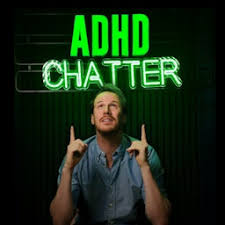Handling ADHD in the Classroom: Developing Effective Teaching Methods

Introduction: Millions of youngsters worldwide suffer from Attention Deficit Hyperactivity Disorder (ADHD), a neurodevelopmental disorder. It can have a big effect in the classroom and can cause problems for both teachers and students. Students with ADHD can, nevertheless, succeed academically and socially with the correct techniques and assistance. In this post, we’ll look at practical teaching techniques for fostering an inclusive classroom where all students—including those with ADHD—can succeed.
Understanding ADHD:
It’s important to comprehend the nature of ADHD before diving into instructional tactics. Chronic patterns of hyperactivity, impulsivity, and inattention are hallmarks of ADHD, and they can affect day-to-day functioning, including academic achievement. It can be difficult for students with ADHD to focus, follow directions, manage their time, and control their emotions. It is critical for educators to understand that ADHD Disorder is a neurological disorder that necessitates specialized care rather than being the product of laziness or rebellion.
Establishing a Supportive and Organized Classroom atmosphere:
Creating a supportive and organized classroom atmosphere is one of the core ideas of educating students with ADHD successfully. To promote success, it is essential to have clear expectations, consistency, and predictability. Here are some methods to make this happen:
Establish Routines:
Students with ADHD may feel more in control and organized if they follow regular daily routines. Schedules and assignments should be displayed clearly, and verbal cues about activity transitions should be given.
Make Use of Visual Aids:
For kids with ADHD, visual aids like charts, graphs, and diagrams help improve comprehension and memory of material. In addition to guiding conduct, visual signals can assist reinforce classroom norms.
Divide Up the Work into Doable Steps:
Students with ADHD may find it difficult to complete complex assignments. Divide tasks into smaller, more doable phases, and during the process, give frequent feedback and encouragement.
Include Movement:
Including movement breaks in the daily routine can assist students with ADHD in letting go of extra energy and enhancing focus. Provide opportunities for physical exercise or include kinesthetic learning exercises in your teaching.
Offer Organizational Support:
To assist kids with ADHD in staying on top of assignments and due dates, teach them organizational techniques like color-coding folders, checklists, or planners. Encourage and model these tactics on a regular basis.
Differentiating education:
Since kids with ADHD have a wide range of learning requirements, it’s critical to adapt education to meet their unique preferences and learning styles. The following techniques can be used to successfully differentiate instruction:
Provide a Range of Modalities:
Provide information in a way that is tactile, auditory, and visual. This enables ADHD students to interact with the content in ways that best fit their preferred methods of learning.
Provide Scaffolding:
As students acquire confidence and independence, progressively reduce support by providing extra help and direction as needed. With scaffolding, kids with ADHD can gradually develop critical abilities and take on difficult assignments.
Permit Flexible Seating:
For students with ADHD, flexible seating alternatives such standing desks, exercise balls, or padded chairs can help them focus and pay greater attention. They can also meet their demand for mobility.
Encourage Active involvement:
Offer interactive learning opportunities, practical exercises, and group discussions as ways to encourage active involvement. Students’ interest and attention are maintained and participation is encouraged as a result.
Provide Extra Time:
Acknowledge that children with ADHD might need more time to finish assignments or tests. Stress can be reduced and pupils can more successfully demonstrate their understanding when longer time accommodations are provided.
Encouraging Self-Regulation and Executive Functioning:
For students with ADHD to thrive academically and socially, they must develop self-regulation and executive functioning skills. Teachers can use the following techniques to assist students in developing these skills:
Instruct Students in Self-Monitoring:
Motivate them to keep an eye on their own actions and academic advancement. Offer chances for introspection and self-evaluation, as well as advice on how to make realistic goals.
Teach students with ADHD how to handle stress and control their emotions by introducing them to mindfulness activities and relaxation techniques. These techniques can enhance concentration and attention while fostering a sense of tranquility.
Encourage Growth mentality:
To foster a growth mentality, emphasize the value of hard work, tenacity, and persistence. Urge pupils to see difficulties as chances for development and education rather than as roadblocks.
Offer Positive Reinforcement:
Recognize and reward desired behaviors and academic accomplishments with positive reinforcement, such as compliments, prizes, and incentives. For students with treat ADHD, receiving positive comments increases motivation and self-esteem.
Work Together with Parents and Support Services:
To create customized plans and interventions that cater to the particular needs of students with ADHD, keep lines of communication open with parents and engage with support services, such as school counselors or special education specialists.
summary:
In summary, educating students with ADHD successfully necessitates a blend of tolerance, comprehension, and research-based techniques. Teachers can enable children with ADHD to realize their full potential in the classroom and in social situations by fostering self-regulation and executive functioning skills, adapting curriculum, and providing a supportive environment. By working together, we can create an inclusive classroom where all students are encouraged, supported, and given every opportunity to succeed.



